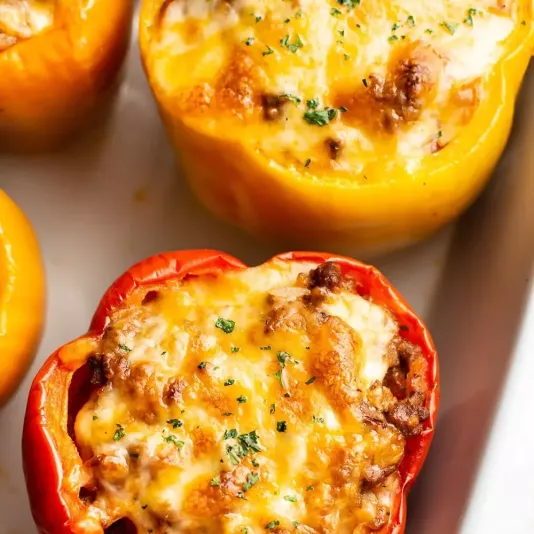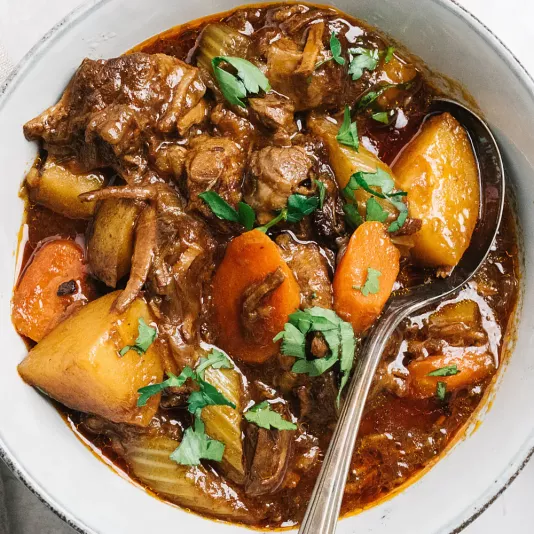Italian Cuisine
Italian cuisine is always associated with harmony of flavors and family warmth. Over years of cooking, I’ve realized that simplicity is its main virtue. The skill of choosing the right type of tomatoes, pasta made from durum wheat, and fresh herbs is not a trifle but the foundation of the result. In my practice, even the simplest sauce can shine if you let it rest and don’t rush to serve it. Italians never hurry at the table – they savor every bite, engage in conversation, and enjoy the atmosphere. And that’s what inspires me. I’ve learned from them not only techniques but also attitude: food should be a source of joy. When I cook an Italian dish, I always strive to maintain balance – not to overload with oil, not to oversalt, not to overdry. This cuisine requires attentiveness, as every detail matters: temperature, sequence, even the way vegetables are cut. Success comes not through complexity but through care and precision.
Italian Cuisine Recipes
When I first cooked classic pasta, I realized that the secret lies not only in the sauce but in understanding the ingredients. Italian cuisine relies on the quality of products, and this rule always applies. Olive oil must be cold-pressed, garlic – not overfried, and cheese – freshly grated. Over the years, I’ve learned that even homemade pasta requires precision: the water should be salty, but not too much; boiling should be only until al dente, otherwise the flavor loses depth. I often notice how beginners overcook pasta and then try to “save” the dish with sauce – that’s a mistake. The balance of Italian cuisine lies in the combination of simplicity and a sense of proportion. Therefore, I always advise first to learn to understand the aroma of basil, the nuances of tomatoes, and the texture of dough. Only then will the dish gain its true character. Italians say: “Mangia con cuore” – eat with your heart, and I completely agree.
Main Ingredients of Italian Cuisine
The foundation of Italian flavor consists of a few simple components: tomatoes, olive oil, garlic, basil, and cheese. Over years of practice, I’ve learned to sense the difference between types of oil – some have a delicate fruity aroma, others are more bitter and suitable for hot dishes. I also choose cheeses carefully: Parmesan for sprinkling, mozzarella for baking, ricotta for tenderness. I always add basil at the end to preserve its fresh aroma. As for tomatoes – the best are those ripened under the sun because they have natural sweetness. I don’t use canned sauces when I can make fresh ones: a few minutes over medium heat, a touch of garlic, a drop of oil – that’s all. Italian cuisine does not tolerate artificiality. It relies on the honesty of the product. If you let each ingredient reveal itself, the flavor will be balanced and natural, without the need for complex combinations.
Secrets of Cooking Pasta
In my kitchen, pasta is not just a dish but a ritual. Over time, I’ve realized that the main thing is not to overload it with sauce. The correct proportion is about half a cup of sauce per serving of pasta. The cooking water must be generously salted because it forms the base of the flavor. After draining, I always leave a bit of the water – it helps combine the pasta with the sauce. If you skip this, the dish may become dry. I cook the sauce separately but never for long apart: pasta should be transferred directly into the pan so it absorbs the aroma. In my experience, the best results come over medium heat when the sauce starts to thicken and the cheese melts evenly. Equally important is the quality of pasta: I choose those made from durum wheat because they hold their shape. Pasta is simplicity, but there’s no place for haste in it. Every move must be precise and deliberate, like in good music.
Italian Sauces: Harmony of Flavor
When I first cooked Bolognese sauce, I was amazed at how logical everything is: time, temperature, sequence. First, the meat is sautéed, then vegetables are added, wine, and only after that – tomatoes. Each step has meaning. If you rush and mix everything at once, it turns out flat rather than rich. The same with carbonara – the egg mixture cannot stand high heat. After years of practice, I’ve learned to recognize the moment when to remove the pan so the sauce becomes creamy rather than turning into an omelet. Success depends on the balance of fat and acidity. Too much oil – the dish is heavy; too little – it’s dry. That’s why I always advise cooking small portions first and watching the changes in consistency. Everything comes with practice. Sauces in Italian cuisine are not additions but the heart of the dish. They define its character, add depth, and leave an unforgettable aftertaste.
Italian Desserts: Softness and Balance
Among sweet dishes, Italian cuisine stands out for its restraint. I’ve always valued this – no excessive sweetness, only harmony. Tiramisu, panna cotta, cannoli – each dessert has its own story and character. In my practice, the main thing is not to simplify recipes because even small details like the cream’s temperature or coffee quality affect the result. For tiramisu, I always use natural espresso and room-temperature mascarpone – this makes the cream even. I cool panna cotta gradually, without sudden temperature changes, to prevent crystals from forming. Italian desserts are tenderness, precision, and patience. They shouldn’t be rushed to serve: the flavor reveals itself only after resting. Over the years, I’ve realized that the best results come when you don’t try to impress – you just cook honestly and attentively. And then even simple panna cotta becomes a piece of culinary art.
The Philosophy of Italian Cuisine
Italian cuisine teaches us not only to cook but to live. Over the years, I’ve realized that its essence lies in balance. Nothing is accidental here: everything has purpose, every ingredient – its role. In my practice, the most important thing is respect for time and product. You can’t rush because flavor doesn’t tolerate haste. Italians cook as if talking to food: they listen, observe, feel. This approach resonates with me. It builds mindfulness and gratitude – things that are often lost in the modern rhythm. When I cook pasta or sauce, I don’t think about quantity, I think about quality. And this rule applies to everything. Italian cuisine doesn’t demand perfection, but it requires sincerity. If you make even the simplest dish with care, the result will always be worthy. And that, in my opinion, is what makes Italian culinary tradition immortal.



